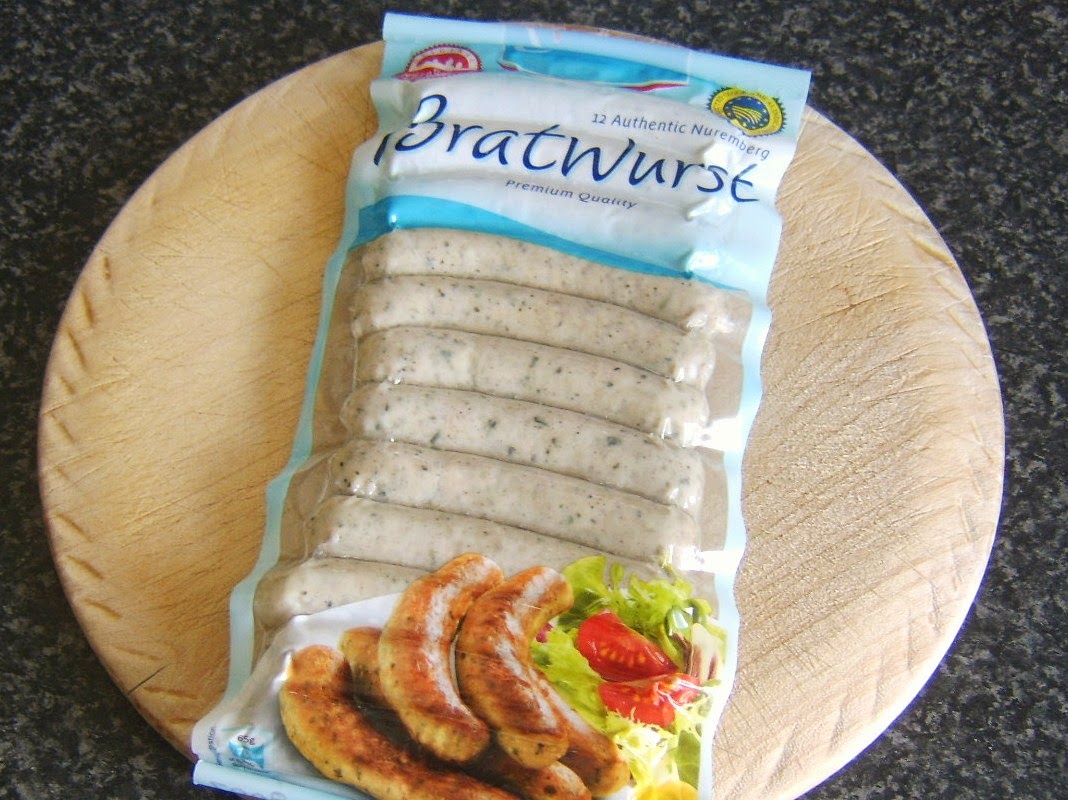 |
| Five bean chilli served with a fried duck egg |
Very often, the meals which I feature on this blog will produce leftovers, which I subsequently use up in what I hope are at least sometimes imaginative ways. It is not so often, however, that the meals which appear here are themselves products of leftovers. In this instance, the five bean chilli was devised and made as a means of using up leftover mince (ground beef) which I had bought for preparing a dish for my new Scottish food blog. That other dish was called
Bhuna Mince and Spicy Turmeric Tatties and I was delighted with the result in both instances.
 |
| Canned five bean salad is washed under running cold water |
Ingredients (Makes One Large Portion)
14 ounce can five bean salad
1/2 pound mince (ground beef)
1 teaspoon whole cumin seeds
1 tablespoon olive oil
Salt and black pepper
1 small red onion, peeled and sliced
1 mild red chilli, seeded and diced
1 mild green chilli, seeded and diced
1 clove of garlic, peeled and grated
8 ounce can chopped tomatoes in tomato juice
1 duck egg
White pepper
Little splash of vegetable oil
1 tablespoon freshly chopped coriander/cilantro, plus extra to garnish
 |
| Toasting cumin seeds |
Directions
Pour the contents of the can of beans in to a colander in your sink. Rinse well under running cold water to get rid of all the "gunge" and possible artificial preservatives. Sit the colander on your draining board to drain for a few minutes.
 |
| Cumin seeds are ground with a pestle and mortar |
Spoon the cumin seeds in to a dry frying pan and toast for a minute or so over a medium heat, shaking the pan every ten seconds. You will see the colour of the seeds change as they toast but above all you should smell them when they are ready. Crush to a powder with a pestle and mortar.
 |
| Browning seasoned beef |
Pour the olive oil in to a large stew pot. Add the beef, seasoning it with salt, pepper and the freshly ground cumin. Brown the beef over a medium heat, stirring all the time with a wooden spoon. This should only take a couple of minutes.
 |
| Red onion, chillies and garlic are prepared for chilli |
The onion, chillies and garlic are then added to the pot and stirred for a further minute or two until the onion is separated and slightly softened.
 |
| Red onion, chillies and garlic are added to chilli |
The drained beans and tomatoes go in to the pot together and everything is given a thorough stir.
 |
| Five bean salad and tomatoes are added to chilli |
Bring the combination to a gentle simmer and cover. Continue to simmer for about twenty minutes, stirring occasionally.
 |
| Five bean chilli is brought to a gentle simmer |
I know that not everyone has easy access to fresh duck eggs. Where you can get them, however, they make a tasty alternative to chicken eggs and
duck egg recipes are equally numerous and versatile. You could of course simply use a chicken egg in this dish instead.
 |
| Fresh duck eggs |
Begin by carefully breaking the duck egg in to a small bowl. This allows you to season it before cooking with salt and white pepper. It also makes it much easier to add to the frying pan.
 |
| Duck egg is seasoned for frying |
Pour a little bit of oil in to a small, non-stick frying pan and wipe it around with a piece of kitchen paper to create an oil film in the pan only. Bring the pan up to a fairly high heat before carefully pouring in the egg. The duck egg should start to cook immediately and when it has clearly taken form and is not going to run (ten seconds or so), reduce the heat to low to medium.
 |
| Starting to fry duck egg |
When the duck egg is in the frying pan, stir the tablespoon of coriander trhough the five bean chilli.
 |
| Chopped coriander is added to five bean chilli |
The duck egg will take four or five minutes to fry. It is ready sunny side up when the white is cooked all the way around the yolk. It is especially important with duck eggs, however, from a food safety perspective that they never be eaten undercooked. For this reason, I did carefully turn the egg and fry for one minute only on the second side.
 |
| Duck egg is fried briefly on second side |
Spoon the five bean chilli in to a deep plate. Lay the duck egg on top and garnish with the remaining coriander.
 |
| Fried duck egg is laid on five bean chilli |





























































